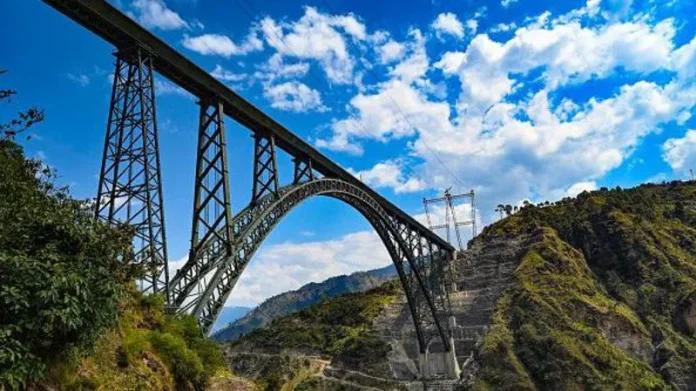Introduction
The world’s highest single-arch rail bridge, built over the Chenab River in Indian-administered Kashmir, is set to connect the Kashmir Valley with the rest of India by train for the first time. This monumental bridge, standing 35 meters taller than the Eiffel Tower, took over 20 years to complete and is part of a 272km all-weather railway line.
Strategic and Economic Benefits
The first train on this bridge is expected to run soon, connecting Bakkal and Kauri in the Reasi district of Jammu. This railway line will ultimately extend to the Kashmir Valley, providing a reliable link to a region often cut off during winter due to heavy snowfall on the Jammu-Srinagar highway. Experts believe that this new railway line will provide India with a significant strategic advantage along its troubled border with Pakistan and China.
Broader Infrastructural Expansion
The Chenab bridge is part of a broader infrastructural expansion under Prime Minister Narendra Modi’s government, which includes more than 50 other highway, railway, and power projects in the region. This development comes after the controversial decision to revoke Jammu and Kashmir’s special status in 2019, a move that has sparked widespread anger and protests.
Local Perspectives and Economic Impact
Locals have mixed feelings about the project. While some acknowledge the improved transport links and potential economic benefits, others fear it is another step by the Indian government to exert more control over the Kashmir Valley. Economically, the rail link is expected to boost Kashmir’s economy by improving connectivity during winter, a season that currently hampers the transport of perishable goods like apples and plums. The new railway line could open up southern Indian markets to Kashmiri farmers, potentially increasing their income. Additionally, the region’s tourism industry, already seeing a surge despite its remoteness, could benefit from the reduced travel time and cost of a direct train between Jammu and Srinagar.
Construction Challenges
The construction of the Chenab bridge, approved in 2003, faced numerous delays due to the region’s challenging terrain, safety concerns, and legal disputes. Engineers had to navigate the treacherous Himalayan topography, a highly seismic zone, and extensive logistical challenges to complete the project. The bridge is designed to withstand simulated wind speeds of up to 266km/h and even a blast of up to 40kg of TNT, ensuring its resilience in a volatile region.
Ongoing Security Concerns
However, challenges remain. Kashmir continues to experience violence, with a recent spurt in militant activity, particularly in the Jammu region where the bridge is located. Incidents like the attack on a bus of Hindu pilgrims in Reasi, which left nine dead, highlight the ongoing instability in the region. Without lasting peace, the full potential of connectivity projects like the Chenab bridge may not be realized.






